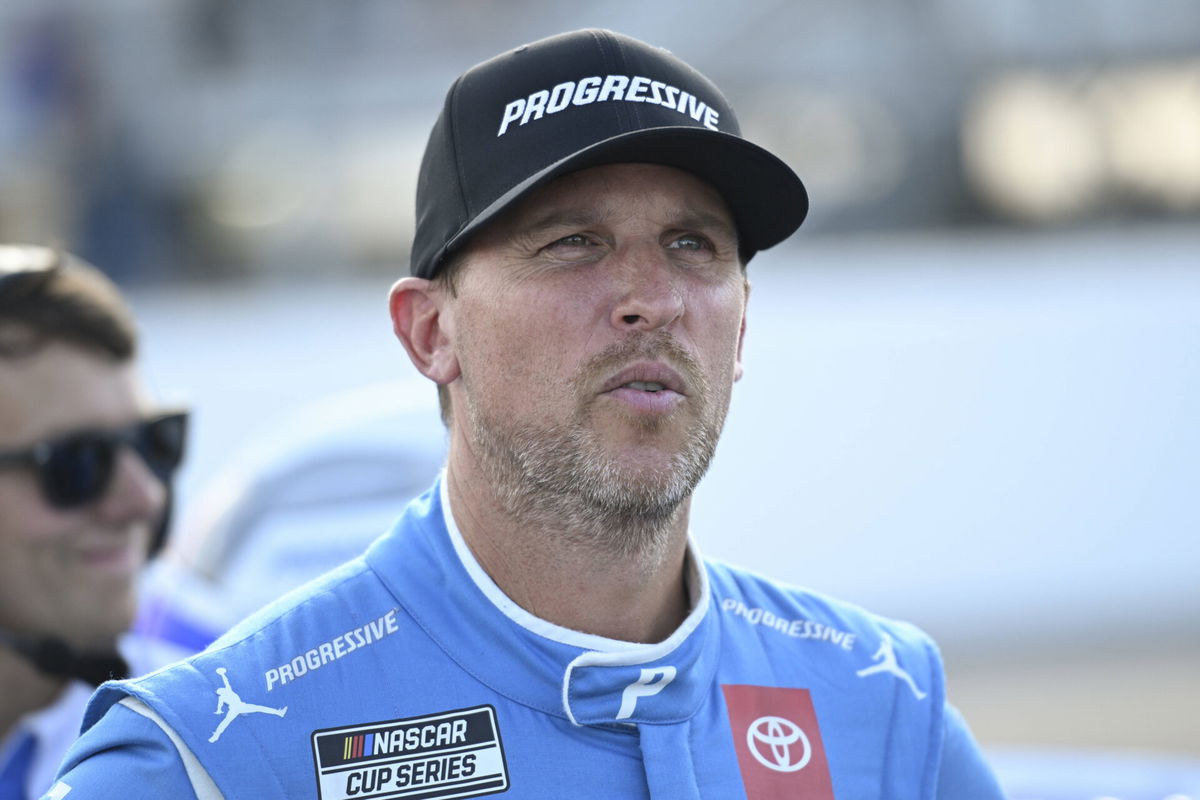
Imago
NASCAR, Motorsport, USA Cup Series-Practice and Qualifying Sep 6, 2025 Madison, Illinois, USA NASCAR Cup Series driver Denny Hamlin 11 looks on during practice and qualifying for the Enjoy Illinois 300 at World Wide Technology Raceway. Madison World Wide Technology Raceway Illinois USA, EDITORIAL USE ONLY PUBLICATIONxINxGERxSUIxAUTxONLY Copyright: xJoexPuetzx 20250906_tbs_pa2_024

Imago
NASCAR, Motorsport, USA Cup Series-Practice and Qualifying Sep 6, 2025 Madison, Illinois, USA NASCAR Cup Series driver Denny Hamlin 11 looks on during practice and qualifying for the Enjoy Illinois 300 at World Wide Technology Raceway. Madison World Wide Technology Raceway Illinois USA, EDITORIAL USE ONLY PUBLICATIONxINxGERxSUIxAUTxONLY Copyright: xJoexPuetzx 20250906_tbs_pa2_024
William Byron’s Las Vegas run had all the makings of a redemption story. Well, right up until it wasn’t. After starting strong and battling for the lead, Byron looked poised to steal the win in the final stage. But one slight bobble in Turns 1 and 2 sent him sliding, forcing him to regroup and chase the leaders again.
Watch What’s Trending Now!
Just as he settled back in, everything unraveled. Byron’s day came to a brutal halt after a sudden collision with Ty Dillon turned his promising run into a heap of crumpled sheet metal. The wreck sparked outrage across pit road and social media, with fans and drivers alike questioning what exactly went wrong. And soon after, Denny Hamlin stepped in to offer a driver ‘s-eye take on the controversial crash.
ADVERTISEMENT
Denny Hamlin’s take on Las Vegas wreck
The Las Vegas playoff race took a dramatic turn when William Byron crashed into Ty Dillon on pit road. Byron, running second and battling for the lead, was caught off guard as Dillon slowed to enter the pits without clear signaling. Denny Hamlin shed light on the incident.
“From what I saw, yes, you want to stay on the banking as long as as you can come to pit road, but he’s up higher. And so what that does, unfortunately for someone like William Byron, is you don’t know if Byron’s looking at the left side door. If even Ty Dillon waved him off, I have no idea whether he did or didn’t,” Hamlin revealed on the Actions Detrimental podcast.
In NASCAR, “waving off” is a common communication between drivers and spotters during pit entry or restarts, signaling a slower car behind to hold back or yield to prevent collisions. Drivers use hand signals and spotter instructions to indicate when it’s safe to merge or pit, helping maintain spacing and reduce the risk of contact.
ADVERTISEMENT
Hamlin stressed the importance of clear communication during such moments, citing his own example. “My spotter always tells me, ‘Wave blank off. He’s five back.’ I make sure if he doesn’t see my hand, he sees it through the line, my actions, and that is I’m really really low because I don’t want to get wiped out. I sacrifice a little bit of pit entry speed to make sure I don’t get wiped out, if that makes any sense.”
Racing drivers, like Denny Hamlin, also often balance speed with safety on pit entry, sometimes sacrificing a few tenths of a second to avoid costly wrecks in case something goes wrong. Hamlin also pointed out that Ty Dillon wasn’t in a position to maximize his pit entry speed.
ADVERTISEMENT
Speaking about the incident, Dillon himself recalled, “Some people stick their hands out, and I do sometimes to let people know if I’m racing hard with somebody. But I feel like William — the part that I wave out is down the backstretch, he was so far back then that I don’t know if he could see or if I didn’t get it out far enough.”
Denny Hamlin, meanwhile, shared his opinion, “Ty, I don’t think was running well enough to really be caring about maximizing his entry speed and running halfway up the racetrack.” Dillon’s higher position on the track contributed to Byron’s inability to anticipate the slowdown, culminating in the race-ending crash that eliminated both drivers and reshaped the playoff picture for contending drivers.
ADVERTISEMENT
Christopher Bell reflects on ‘super scary’ Byron-Dillon wreck
Christopher Bell found himself in the middle of chaos during Sunday’s NASCAR Cup Series playoff race at Las Vegas Motor Speedway, narrowly escaping one of the day’s most frightening wrecks. The incident unfolded when William Byron slammed into Ty Dillon, who was slowing to pit. The impact sent both cars spinning violently, creating a sudden mess that caught several others in the crossfire.
Bell, who was right behind the crash, recalled the tense moment after the race. “Yeah, the 24 [Byron] and 10 [Ty Dillon] was just super scary,” he admitted. “The sun is really bad off turn four, so you can’t see anything, and yeah, just kind of closed my eyes and hoped that I could get through there, and fortunately, I did.”
The video replay showed just how little time drivers had to react. William Byron came in hot, struck Dillon at high speed, and chaos erupted instantly. Bell’s quick instincts and composure helped him thread through the wreckage unscathed, a move that ultimately saved his race.
ADVERTISEMENT
While Byron’s day ended abruptly with a 36th-place finish, Bell’s remarkable escape allowed him to finish third, a crucial result for his playoff run. But the challenges didn’t stop there. Soon after, he was caught in another 11-car pileup on a restart, yet somehow managed to keep his car alive and finish strong.
Bell’s near-miss served as a stark reminder of the razor-thin line between disaster and survival in NASCAR’s playoff intensity. As the season comes close to the end, visibility, timing, and instinct can define a driver’s championship hopes.
ADVERTISEMENT
ADVERTISEMENT
ADVERTISEMENT

